The carbon brace
- PMID: 23409701
- PMCID: PMC3599608
- DOI: 10.1186/1748-7161-8-3
The carbon brace
Abstract
Background: The CMCR brace (Corset MonocoqueCarbone respectant la Respiration -which means Monoshell Carbon Brace respecting Breathing) is an innovative brace, used in orthopaedic treatment for progressive thoracic, thoraco-lumbar or combined scoliosis, whatever their etiology. It can be used at the very young age without disrupting the chest growth, but should be kept for reducible scoliosis in older teenagers. BRACE DESCRIPTION AND PRINCIPLES: The CMCR brace is monoshell while retaining the corrective principle of the polyvalve Lyon brace with one or two supports (brace "pads") located on hump(s).In contrast to Lyon brace made of plexidur and structured by metal reinforcement with adjustable but fixed localized supports, the CMCR brace is made of polyethylene and carbon with adjustable and mobile supports. This mobility provides a permanent pressure, which varies depending on ribs and spine movements.The correction is obtained without spinal extension so that each respiratory movement takes part in a gradual return to dorsal kyphosis.
Results: Results were presented in two published analysis:• In the first retrospective study about 115 patients, French-published in the Annals of Physical Medicine and Rehabilitation (2005), the CMCR brace stabilized moderate scoliosis, decreased the vital capacity (VC) of 13% compared to the VC without brace, and did not have sufficient impact on the hump reduction. Treatment had better results when started at Risser 3 or 4 than Risser 0, 1, 2. The brace was then modified to increase the dorsal pad pressure and the location of correction forces was defined more precisely through the use of 3D analysis.• The second study published in Scoliosis (2011) mainly focused on the impact on VC at brace setting up and followed a cohort of 90 patients treated with CMCR. Girls as well as boys increased VC during treatment, and at brace definitive removal, VC had increased of 21% from the initial value, whereas the theoretical VC at the same time rose by 18%.The difference between the time where the child actually wears its brace and the time asked by the clinician for the brace to be worn is only 1 hour, which means that this brace is accepted by teenagers.
Conclusions: Orthopaedic treatment is still a heavy treatment for teenagers in growth period. This orthosis is designed to partly maintain spine and chest mobility. We hope so to have part in improving life conditions of these teenagers, compared to those treated with rigid braces.
Figures




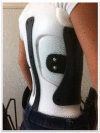
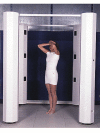

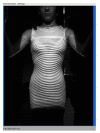
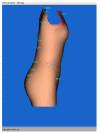
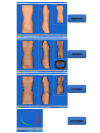
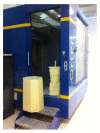
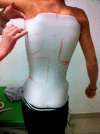



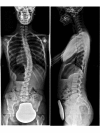




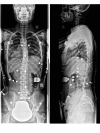

References
-
- Weiss H, Negrini S, Rigo M, Kotwicki T, Hawes MC, Grivas TB. Indications for conservative management of scoliosis (SOSORT guidelines) Stud Health Technol Inform. 2008;135:164–170. - PubMed
-
- Bernard JC, Boussard D, Saillard V, Barral F, Berne G, Mulatier A, Lecante C. Corset Monovalve Carbone Respectant la Respiration (CMCR): Présentation Du Corset et etude Statistique Des Premiers Résultats A Propos De 100 Cas. [Oral communication].35ème réunion du GES (Groupe d’Etude de la Scoliose) Bruxelles, mars; 2004.
-
- Notin G, Bernard JC, Deceuninck J. [Oral communication]. 8th SOSORT International Conference on Conservative Management of Spinal Deformities. Barcelona; 19–21 May 2011. Evaluation of the efficacy of a carbon brace (“Corset monocoquecarbonerespectant la respiration” (CMCR)) preserving lung capacity to treat idiopathic scoliosis in children and adolescents: a retrospective study of 115 patients .
LinkOut - more resources
Full Text Sources
Other Literature Sources

